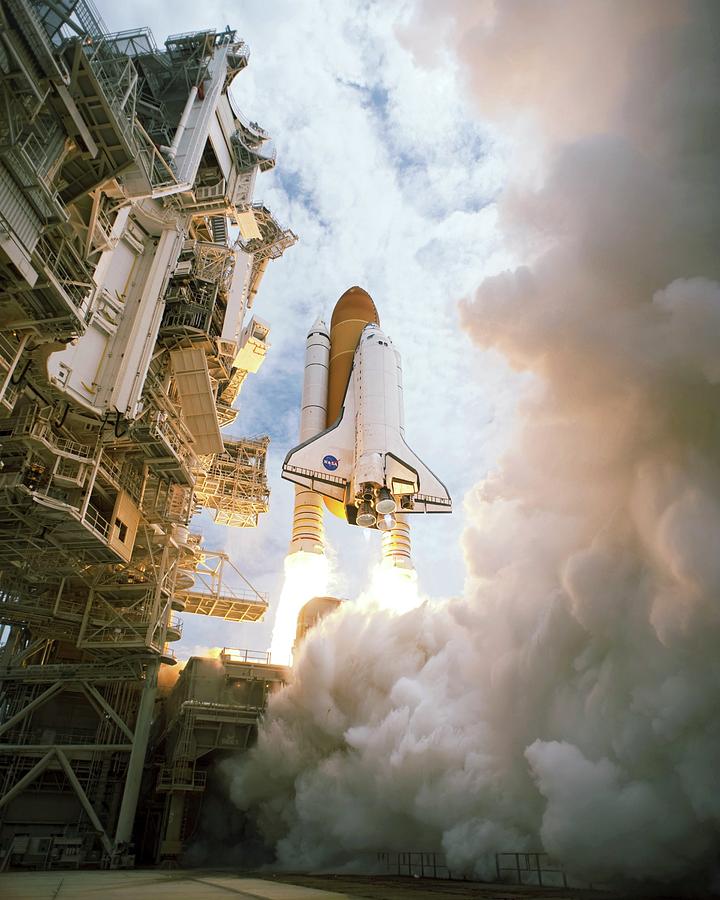

- NASA SPACE SHUTTLE FLIGHTS INSTALL
- NASA SPACE SHUTTLE FLIGHTS ARCHIVE
- NASA SPACE SHUTTLE FLIGHTS SERIES
The entire failure could be traced to an O-ring, a rubber seal on the solid rocket boosters (according to Nasa Technical Reports Server (opens in new tab)) that degraded in the cold weather of the launch. The commission report talked about the technical causes of the accident. The crew of the Challenger who were killed tragically in the disaster. SMM continued functioning for several years, then burned up in the atmosphere in December 1989. Nelson and crewmate James "Ox" Van Hoften repaired the satellite, then the crew lofted the satellite back into space, according to The New York Times (opens in new tab). Crewmembers on Challenger then reached out with the shuttle's Canadarm robotic arm and plucked the satellite out of empty space and into the payload bay. Next, he fired the jets on his backpack to stop the satellite's spin. A fixture on the front of his backpack let Nelson dock with the satellite, which was slowly tumbling in space, according to an article by NASA (opens in new tab). Then, Nelson carefully left the safety of the shuttle and flew over to the satellite.
NASA SPACE SHUTTLE FLIGHTS ARCHIVE
The crew maneuvered Challenger until it was only 200 feet from the satellite, according to the Life Sciences Data Archive (opens in new tab). It had been tested on only one mission before this one. To get at the nonfunctional Solar Maximum Mission (SMM) satellite, astronaut George Nelson strapped himself into the Manned Maneuvering Unit, which was a jet-powered backpack designed for astronauts to fly in space. That mission featured the very first astronaut repair of a satellite. Some of Challenger's most memorable moments took place in April 1984, on STS-41C. George Nelson, who wore the Manned Maneuvering Unit. Astronauts Story Musgrave and Donald Peterson executed the first spacewalk of the shuttle program. 1, according to The New York Times.Īfter another delay due to a problem with the TDRS, Challenger launched successfully on April 4, 1983, on mission STS-6.

3 were deemed healthy, NASA replaced engine No. The agency then took several months to remove the engines and test them. 25, 1983, NASA discovered cracks in the engine that were causing the leak. 1 main engine aft compartment during a flight readiness test in December, according to Science.ksc (opens in new tab). But several technical malfunctions pushed the launch back.įirst, NASA discovered a hydrogen leak in the No.
NASA SPACE SHUTTLE FLIGHTS SERIES
20, 1983, to release the first Tracking and Data Relay Satellite (TDRS), which later became part of a series of satellites that astronauts used to stay in touch with controllers back home. Delays for the first flightĬhallenger was expected to go into space on Jan. 23, 1981, according to NASA (opens in new tab).
NASA SPACE SHUTTLE FLIGHTS INSTALL
Among other things, workers had to strengthen the wings, put in a real crew cabin instead of a simulated one and install heads-up displays for the astronauts working inside. It took two more years for Rockwell to perform the conversion. This would expand the shuttle fleet to two spacecraft, with Columbia being the first, though this would similarly end in disaster. In 1979, NASA awarded Rockwell International a supplemental contract to convert the test vehicle to a spacecraft. of force, were used as substitute space shuttle main engines. Three hydraulic cylinders, each with 1 million lbs. This custom-designed machine could bring the shuttle through a simulation of all phases of flight, from liftoff to landing. The shuttle, then known as STA-099, went through 11 months of vibration testing in a specially formulated rig, NASA said (opens in new tab).


 0 kommentar(er)
0 kommentar(er)
